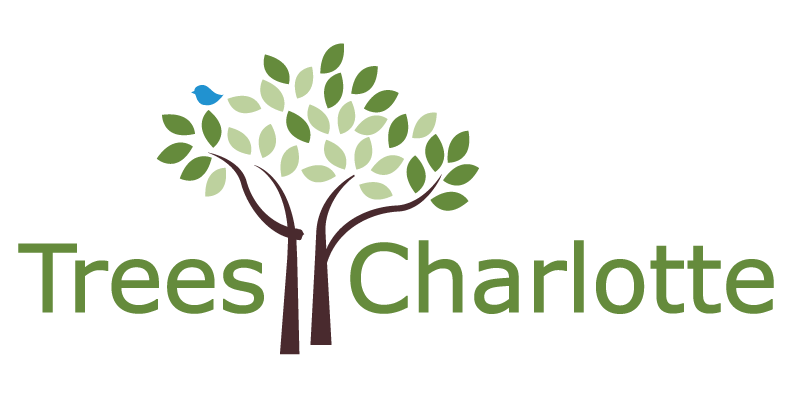Nominate A Tree
The Treasure Trees Committee is excited to take nominations for new entries. Read the guidelines below to see if your tree might be a candidate and then fill out the nomination form. The Treasure Trees Committee will review the information and be in touch. Header photo by Lindsay Kappius.
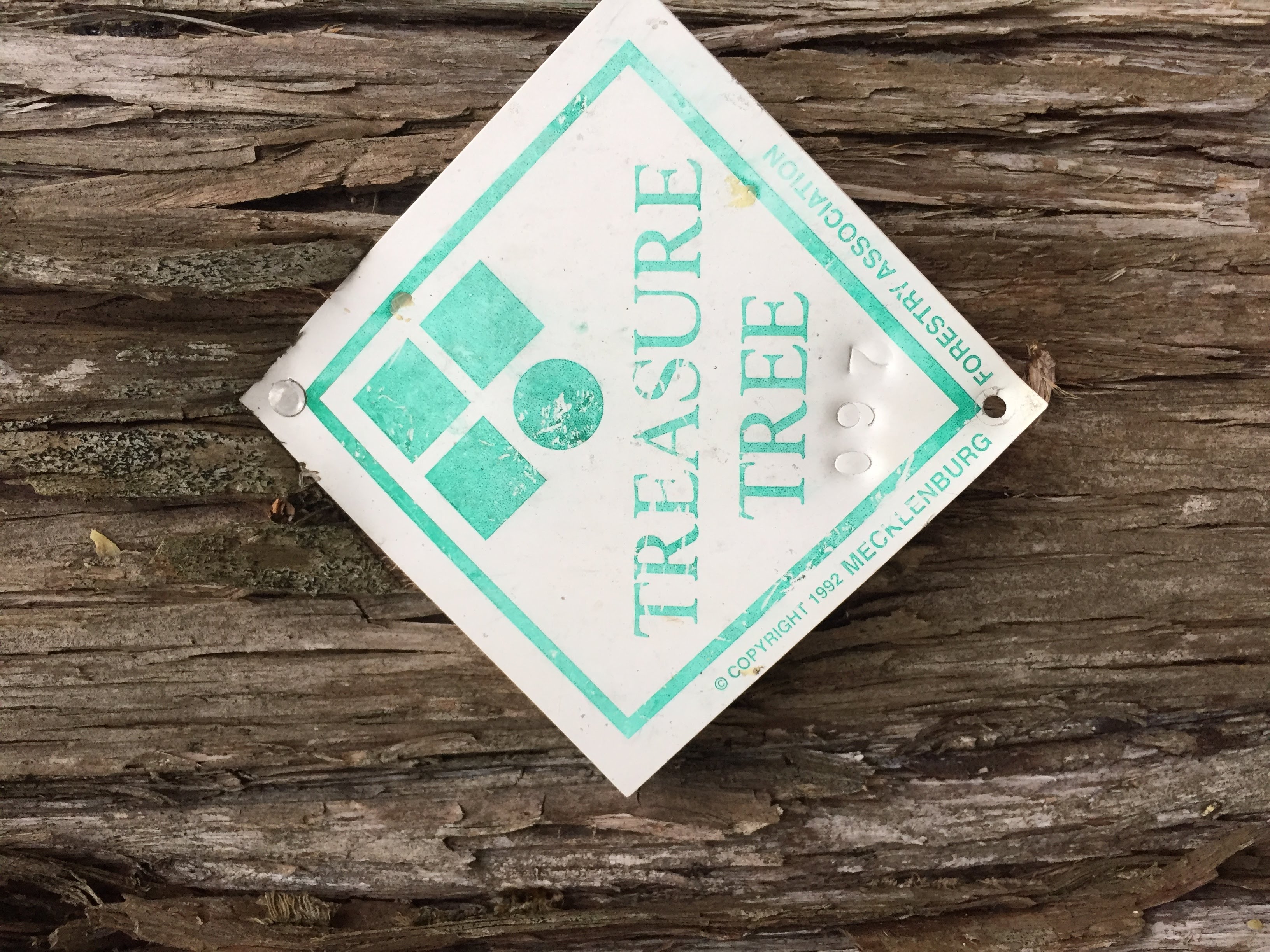
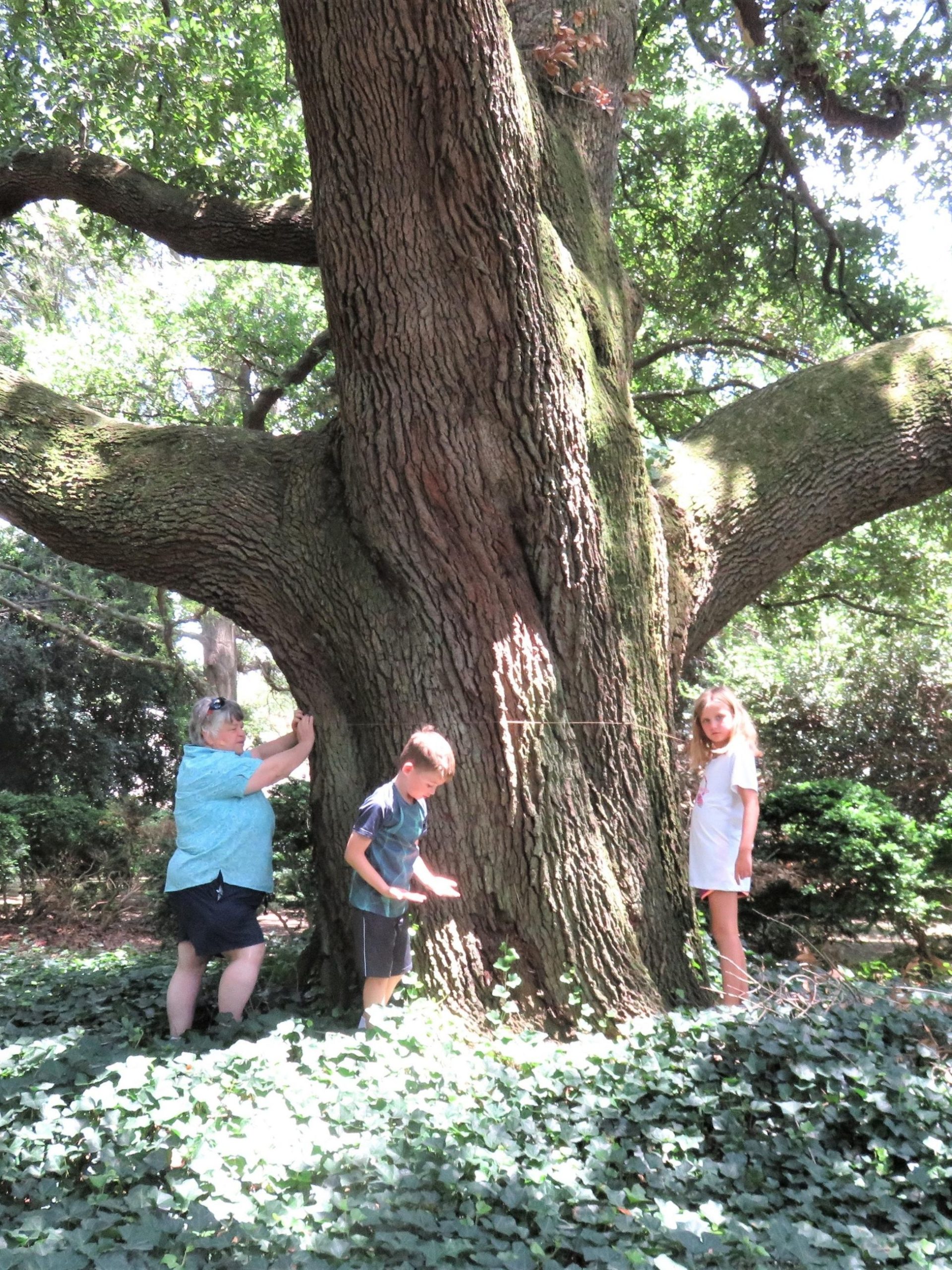
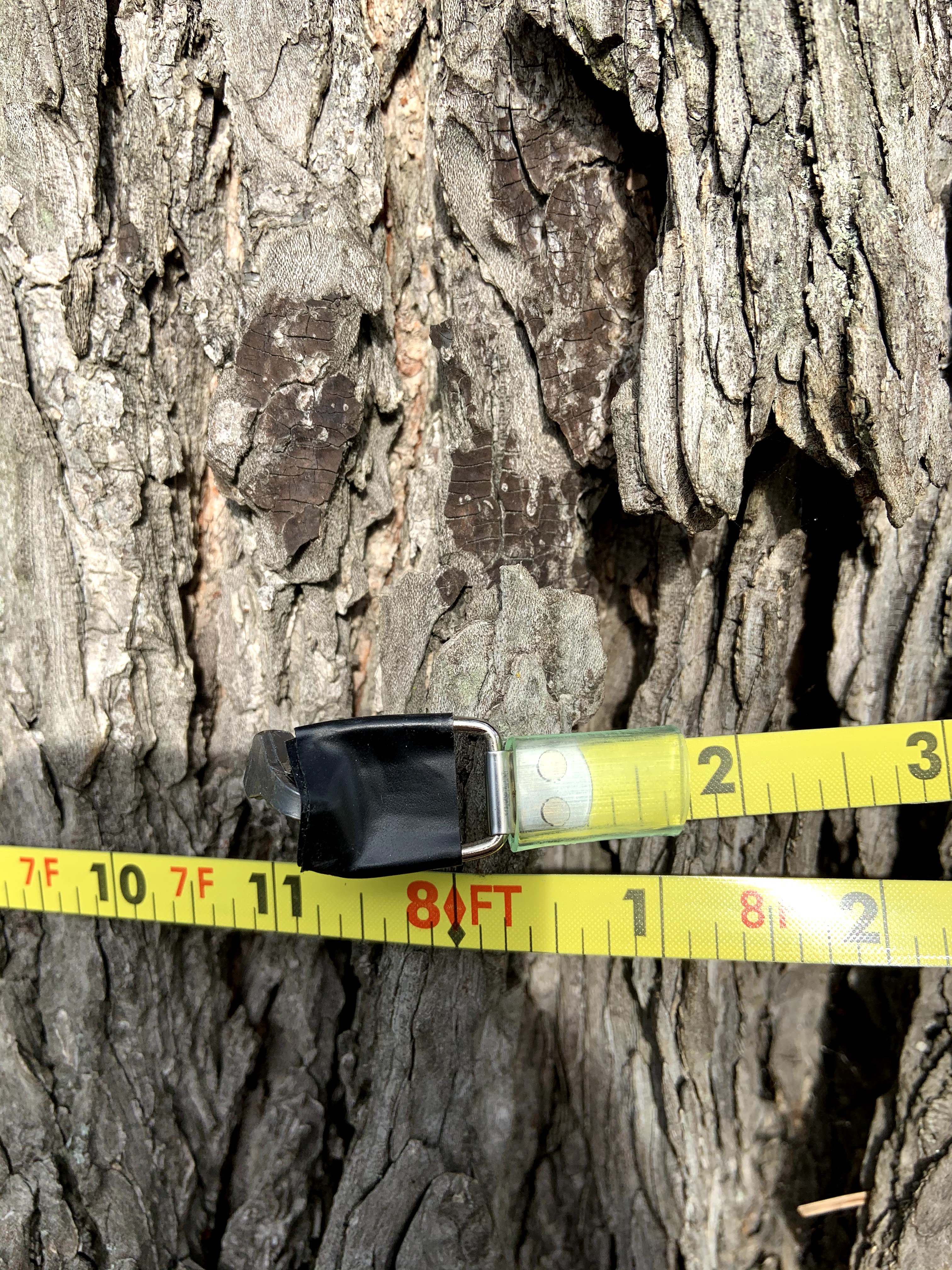
GUIDELINES
SPECIES
A tree can be considered for Treasure Tree status if it is:
- Native to North Carolina, or successfully introduced to our geographic area and demonstrated longevity
- Not categorized as an invasive species
- Resides in Mecklenburg County
Once a tree meets those criteria, it must meet at least one of the requirements below to earn a spot on the Treasure Tree registry:
LOCATION
The goal of the Treasure Trees program is to share the stories of Mecklenburg County's largest, most historic trees in hopes of inspiring others to preserve our urban tree canopy. Therefore, trees that can be shared on our website and viewed by the public are preferred! This includes street trees, trees in parks, schools, houses of faith, businesses, and front yards.
SIZE
Most of the trees nominated and accepted into the program qualify because of their large size for their species, based on the following criteria:
- A total points measurement equal to or greater than 70% of the North Carolina Champion Tree of that species, found in the N.C. Forest Service Champion Tree Database. Points formula: Height in feet + circumference in inches + 25% of the average crown spread in feet.
- Ranks as one of Mecklenburg County’s three largest trees of the species
HISTORICAL SIGNIFICANCE
A tree may also be considered if it has some significant historic significance to Mecklenburg County. For example, a tree may have documentation indicating it was planted by an original family settling in the county in the 1700s or 1800s. To nominate such a tree, you should be able to share some of the stories behind it.
COMPARE YOUR TREE
The Treasure Trees Committee will accept up to three special trees of each species. Here are a few of the biggest trees recognized in Mecklenburg County as Treasure Trees:
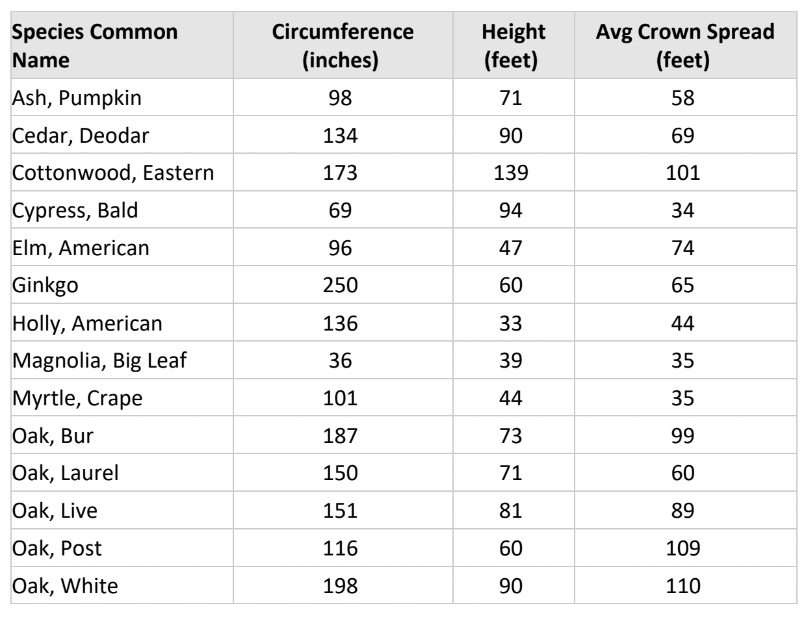
TREES OF INTEREST
Several trees of certain species on the original list are now completely gone. We'd love to find new replacements for some of the following:
- Ash (Green, White, Blue or Black)
- Beech, American
- Chestnut (American or European)
- Hornbeam, American
- Magnolia, Southern
- Mulberry, Red
- Oak, Black
- Oak, Chinkapin
- Oak, Northern Red
- Oak, Overcup
- Oak, Southern Red
- Oak, Water
- Orange, Osage
- Pine, Longleaf
- Sassafras
- Sweetgum
NOMINATE A TREE
MEASURE YOUR TREE
1. Find a big tape measure! You will need to measure the circumference of the trunk at 4 1/2 feet from the ground. Measure all the way around the trunk of the tree in inches.
2. Measure or estimate the height of the tree. If you do not have tree height measurement tools (clinometer or hypsometer), try to estimate as best you can. Compare with something nearby, such as the roof of a house.
3. Measure or estimate the crown spread. If you don't have a long enough tape measure, pace off the crown in a straight line from each end of the widest part perpendicular to the trunk. A normal adult step pace is about 2.5 feet. Measure the widest part and then the span that is at a 90-degree angle from that. Add the two and divide by 2 to get your average.
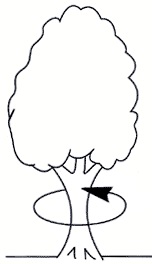
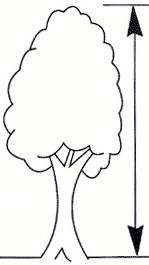

TAKE PICTURES
Take a few pictures. Be sure to get one of the full tree and try to include a person in the photo for reference. If possible, take a close-up picture of the bark and one of the leaves.
SUBMIT YOUR NOMINATION
Fill out the nomination form. The Treasure Tree Committee will contact you for next steps.
